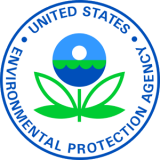EPA Celebrates 50 Years of Research: Highlight on Flint Hills Prescribed Burns
Environmental News
FOR IMMEDIATE RELEASE

(Lenexa, Kan., Aug. 6, 2020) - As part of its 50th anniversary celebration, the U.S. Environmental Protection Agency (EPA) is kicking off a monthlong observance of its progress in conducting innovative research to protect human health and the environment.
In the heartland, EPA Region 7 continues to work in partnership with the Kansas Department of Health and Environment and a wide range of stakeholders on safe and effective prescribed burns in the Flint Hills region of central Kansas. Usually occuring in April, these prescribed burns can adversely impact air quality and increase the likelihood of negative health consequences, especially for vulnerable groups.
“Flint Hills research has demonstrated the importance of burning to sustain the prairie ecosystem and grazing value for ranchers,” said Region 7 Administrator Jim Gulliford. “But it also shows the importance of extending the burn season to prevent harmful air quality impacts to communities and cities across the region. Using this information, ranchers and cattlemen are able to schedule burns in a way that protects Flint Hills ecology, grazing and air quality.”
Landowners in the area have taken steps to spread out burning beyond the traditional early April burn window to reduce the impacts of smoke on air quality. EPA continues to support research into effective smoke management practices for prescribed burns of prairies to reduce the impact of smoke in local communities.
“From the moment EPA was established 50 years ago, the Agency has been guided by science,” said EPA Administrator Andrew Wheeler. “EPA research has provided the foundation for Agency policies, actions and decisions that have protected and enhanced the lives of the American people.”
“Our researchers have provided the data, knowledge and tools needed to tackle the most pressing environmental and related health challenges the nation has faced over the past 50 years,” said EPA Principal Deputy Assistant Administrator for Science and EPA Science Advisor Jennifer Orme-Zavaleta. “EPA researchers have been at the forefront of environmental science, and our groundbreaking research has helped protect human health and the environment since 1970.”
EPA’s Office of Research and Development is an integral part of the Agency’s efforts to address current concerns. For example:
Evaluating SARS-CoV-2 in the Environment:
- EPA researchers are working on several efforts related to SARS-CoV-2 in the environment. Researchers at EPA and the Centers for Disease Control and Prevention (CDC) are collaborating to develop and apply methods for measuring SARS-CoV-2 levels in wastewater. EPA researchers are also working with the CDC to develop a simple, low-cost, non-invasive antibody test using saliva samples. EPA researchers are studying anti-microbial products and application methods for long-lasting disinfection, as well as ways to disinfect large spaces. Additionally, researchers are evaluating methods of disinfecting personal protective equipment (PPE).
Researching chemicals such as per- and polyfluoroalkyl substances (PFAS):
- EPA is leading the national effort to understand PFAS and reduce PFAS risks to the public through implementation of its PFAS Action Plan and through active engagement and partnership with other federal agencies, states, tribes, industry groups, associations, local communities, and the public. EPA researchers are developing methods to detect and quantify PFAS in environmental media; gathering and assessing data on chemical toxicity; and evaluating the effectiveness and the cost of different technologies for treating, removing and disposing of PFAS in drinking water and contaminated sites.
Since 1970, EPA researchers and partners have provided data, knowledge and tools to address:
- Identifying the detrimental effects of lead in gasoline. In 1981, EPA research began to demonstrate that low-level lead exposure in North Carolina children impairs hearing and cognitive function. This data subsequently contributed to the CDC’s decision to lower the level of concern for lead exposure in children, as well as the pivotal decision to remove lead from gasoline.
- Conducting the first-ever assessments of major ecosystems. In 1990, EPA researchers initiated the Environmental Monitoring and Assessment Program to develop the tools necessary to monitor the conditions of aquatic ecosystems, how they were changing over time, and the major stresses impacting them. This work helped provide the foundation for the National Aquatic Resource Surveys, collaborative programs between EPA, state and tribes that provide critical, groundbreaking data on the nation's waters.
- Identifying the health risks of second-hand tobacco smoke. A 1993 landmark EPA health assessment concluded that tobacco smoke not only presents risks to the health of smokers but also to those around them. The science underpinning the assessment provided health officials and others the evidence needed to act in protecting people from exposure to secondhand smoke. The assessment's impact has been far-reaching and has led to healthier air, particularly indoor air, for millions of people.
- Extending Americans’ life expectancies. EPA’s clean air research, which has provided the basis for the National Ambient Air Quality Standards, is in part responsible for increasing the average life expectancy of Americans by approximately five to eight months according to findings from a 2009 EPA-supported study.
- Changing the way chemicals are evaluated. EPA scientists have developed faster, more efficient, and far less costly ways to test and screen chemicals than traditional methods. In 2011, EPA and its partners debuted the Tox21 Robot to screen 10,000 chemicals for potential toxicity. Results from this screening help researchers prioritize chemicals for further in-depth investigation.
Learn more about EPA’s 50th anniversary.
Learn more about the impacts of the Agency’s cutting-edge research.
Follow EPA’s 50th Anniversary celebration on social media using #EPAat50.
# # #
Learn more about EPA Region 7
View all Region 7 news releases
Connect with EPA Region 7 on Facebook: www.facebook.com/eparegion7
Follow us on Twitter: @EPARegion7
